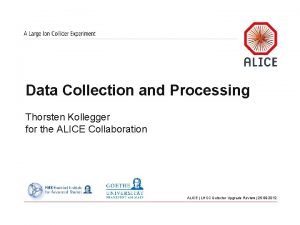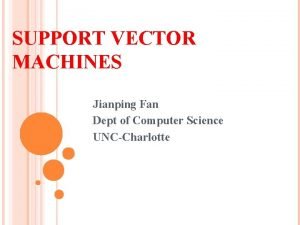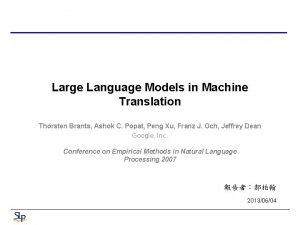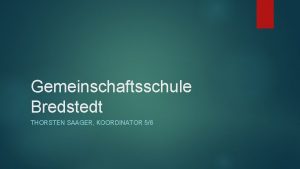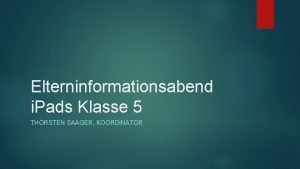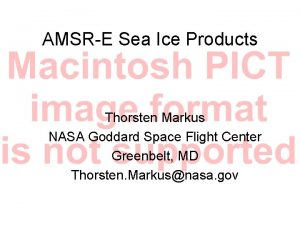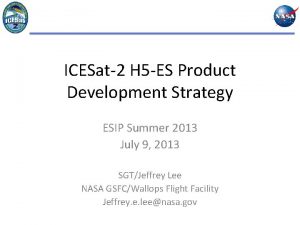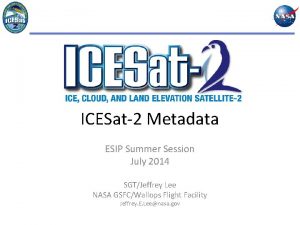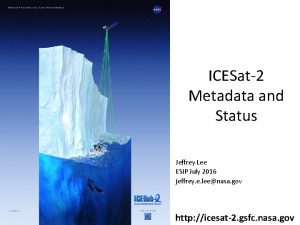ICESat2 Project Science Operations Concept Thorsten Markus Tom







- Slides: 7

ICESat-2 Project Science Operations Concept Thorsten Markus Tom Neumann Charles Webb Kelly Brunt ICESat-2 SDT Meeting Scripps Institution of Oceanography La Jolla, California January 9 -10, 2014

Background • ICESat-2 has specific Level-1 elevation change accuracy requirements that must be met • The scope of the mission extends beyond land sea ice to include vegetation sampling in the midlatitudes (unlike ICESat-1) • The Project Science Office (PSO) is in the process of establishing priorities for targeting during the mission prior to launch • Continuous operation of ICESat-2 necessitates a transparent and routine process for alternate science targeting requests • Requests to deviate from primary science data collection will require advance notice and justification

Science Target Priorities • • • Polar reference ground tracks (RGTs) Vegetation off-points Ocean RGTs Ocean & around-the-world scans PSO calibration targets Science Team requests from core disciplines: – ice sheets, sea ice, oceans, vegetation – also includes inland water, seasonal snow, permafrost • Non-core science requests (e. g. , volcanoes, agriculture, urban), especially those from NASAfunded investigators

Requests: Evaluation • Establish a review board, similar to a configuration change board (CCB) • Members will include PSO and Science Team representatives • Meet weekly/bi-weekly via telecon • Requests passed to ISF for conflict evaluation • Reasons for disapproval returned to requestor: lack of adequate justification or conflict • Notification of deviation from primary science will be sent to investigators (ST + funded scientists)

Requests: Factors to Consider • Length/duration of proposed disruption (including transitions) • Location (with respect to polar and vegetation priorities) – can this data be obtained at another time? • Opportunity cost/scientific merit: is the disruption to regular data acquisition warranted? • Past use/frequency of request: is data from the same target repeatedly requested? Is it being used? • Discipline: does the proposed data collection activity fall within the mission scientific objectives?

Requests: Inputs Required • • Location/RGT number Direction: ascending or descending Indicate whether target is time-critical Rationale, including why ICESat-2 should be used, rather than other data sets • Identify any changes to what is downlinked (e. g. , width of range window, strong/weak spots)

Requests to Commands: Process Request Project Science Office ICESat-2 NO Notify Requestor Uplink T-3 days Mission Operations Center YES Review Board NO Approval T-5 days YES Instrument Support Facility 3 -week load plan Mission Operations Center IOTL T-7 days Instrument Support Facility
